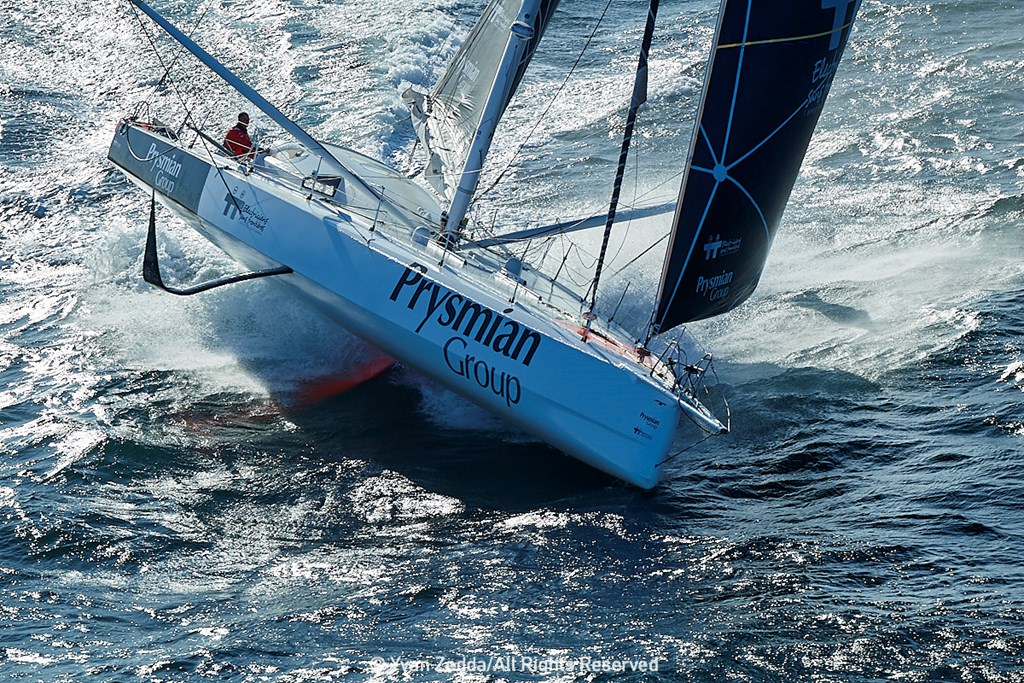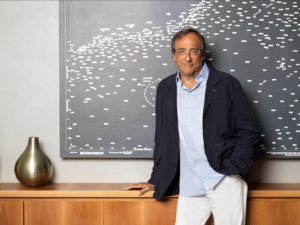For the designer Guillaume Verdier, “As we always do, we weighed up the various criteria and ratios before choosing this aeronautical titanium.” Above all they needed to “take into account the qualities of the material and think of how to work with it. For example, with welding techniques using machines, which bombard it with beams of electrons. After that, this hollow keel meant we could lower still further the centre of gravity.” Among the criteria the designer is referring to, there is one that is key for Marc Guillemot: “For me, the uppermost priority was reliability. That’s why we opted for a titanium keel. After that, and only after that consideration, we of course tried with Guillaume Verdier to find ways to improve hydrodynamic performance, reducing drag from the bulb and lowering once again the centre of gravity. That’s what we all attempt to do on our monohulls, as to keep it simple, the greater the weight down below, the better the performance and the more power we obtain. If we could, we would put it down below the keel!”
Inertial guidance system
Another innovation is the inertial guidance system, a technology developed by Sagem (Safran Group), one of the world’s leaders in this field. “It seemed obvious we should try to make use of this technology developed in the Group to work on our 60-foot boat,” explained Jean-Marie de La Porte. “This system, based on the gyroscopic effect, measures the boat’s movements in real time along three axes (rolling, yawing, pitching), and accelerations. Combining this data with other information such as the wind and steering angle, we can find out more about the performance of the boat in every sort of condition and then work to improve on that.”
Wiring: just like in a plane
The installation of these electronic systems on board the boat made the wiring rather more complicated. The teams therefore called upon the services of two companies within the Group, Labinal and Safran Engineering Services, who redid the entire electrical installation, wiring the boat in the same way they would aircraft. The result is an improved wiring pattern for the cable harnesses and the connections to all the electronic systems. “This ensures reliability,” commented Jean-Marie de La Porte. “On top of that it makes it easier to carry out maintenance work and the use of aluminium cables means we have seen big weight savings.”
The steering system
Finally the steering system has been transformed. “The traditional system where movements of the helm are relayed using rigid rods has been replaced by a system of textile rope transmission that our design team came up with. The autopilot jacks have been moved closer to the rudders. This all offers a better response and makes piloting the boat more precise,” added the Safran project leader.
Heavy involvement from the Group
All of these changes use technology developed within the Safran Group and the know-how of experts in their respective fields. For Jean-Marie de La Porte “this of course adds to the value of the sailing sponsorship project by associating 55,000 employees within the Group. The list of those involved in the project is growing longer and longer and concerns every speciality. For example, the technicians and wiring experts from Morpho were involved in the rewiring of the boat.” They will all be behind Marc Guillemot and Yann Eliès in their next big race, which is drawing near: the Transat Jacques Vabre, starting in Le Havre in a fortnight from now and finishing in Costa Rica. They are facing the biggest challenge, as they will be defending their title won back in 2009.









